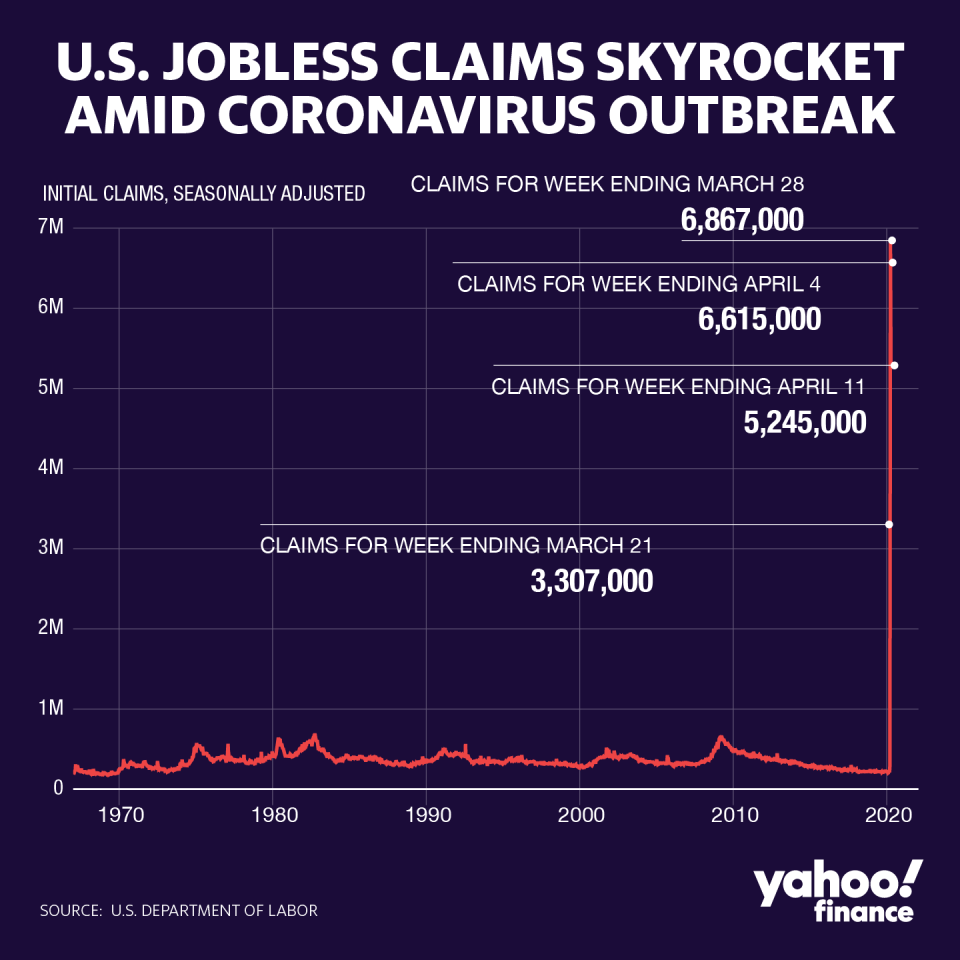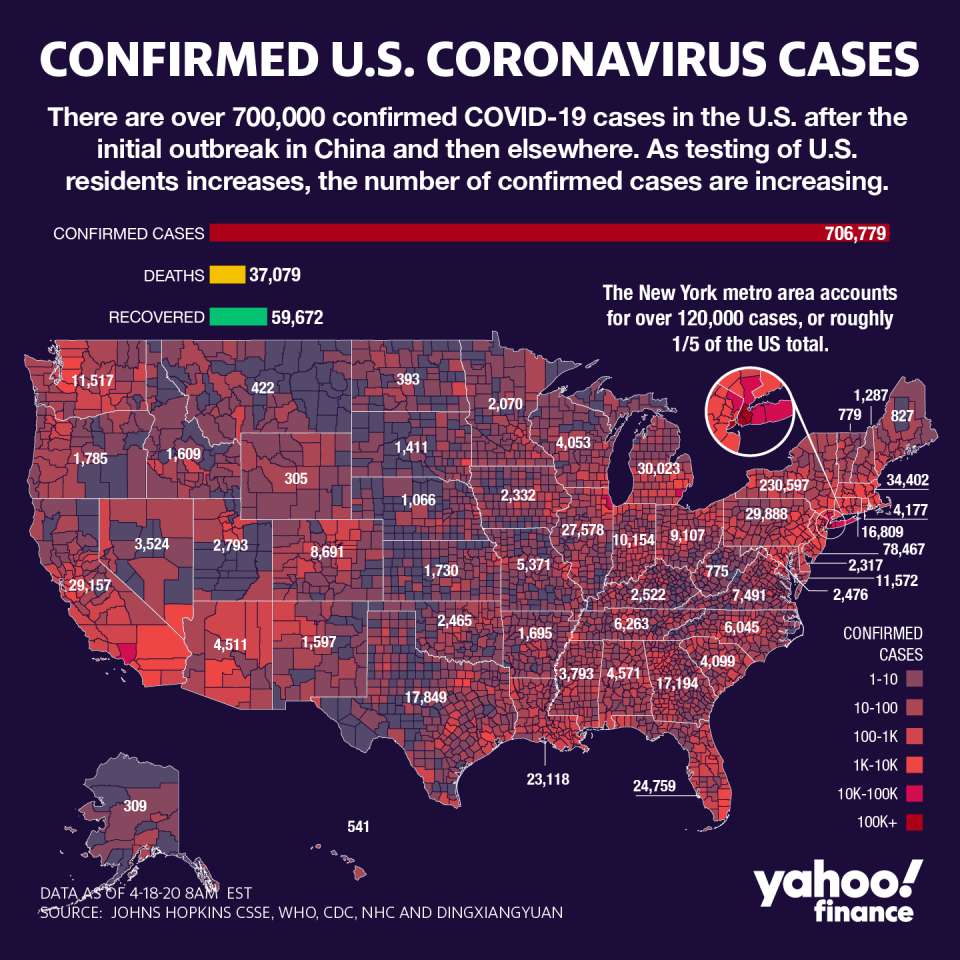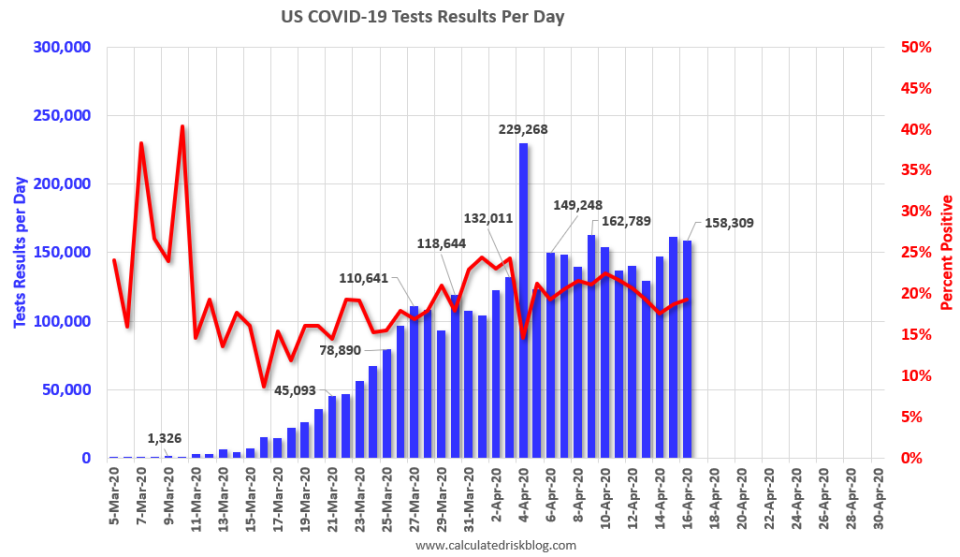Jeff Bezos sketched out our biggest challenge in re-opening the U.S. economy
Testing needs to rise as quickly as jobless claims
The pressure is rising in the U.S. economy.
Another 5.245 million Americans filed for unemployment insurance last week. In just four weeks, 22 million workers have filed unemployment claims.
A study from the Federal Reserve published Thursday estimates 18 million Americans lost jobs between February 15 and April 4. Jobless claims data suggest the losses are even greater than this.
And as economic data deteriorates the drumbeat that the U.S. economy needs to re-open has grown louder. On Thursday, the White House announced a three phase plan for re-opening the U.S. economy.

But the obstacles we face between here and there — between an economy in which only those workers deemed essential are leaving their homes and an economy in which a normal workforce is out in the world — are many.
Get the Morning Brief sent directly to your inbox every Monday to Friday by 6:30 a.m. ET. Subscribe
In his latest annual letter to shareholders, Amazon (AMZN) CEO Jeff Bezos diverged from his normal discussion of Amazon’s place in the competitive landscape to talk almost exclusively about the company’s efforts to meet coronavirus-related challenges.
Bezos’ discussion of how Amazon is thinking about the steps needed to get its workforce operating on something resembling a normal schedule outlines how large the challenges facing the broader economy really are. And his comments are a reminder of how far away our national capacity is from being equipped to meet many of these challenges. Particularly when it comes to testing.
“A next step in protecting our employees might be regular testing of all Amazonians, including those showing no symptoms,” Bezos writes. “Regular testing on a global scale, across all industries, would both help keep people safe and help get the economy back up and running. For this to work, we as a society would need vastly more testing capacity than is currently available.

“If every person could be tested regularly, it would make a huge difference in how we fight this virus. Those who test positive could be quarantined and cared for, and everyone who tests negative could re-enter the economy with confidence.”
This is the view many lawmakers have been broadcasting in recent days and weeks: testing needs to be widely, readily available not just for those with access to a doctor’s office or those showing obvious COVID-19 symptoms. Testing for COVID-19 needs to be a regular, widespread, common part of American life before we can send millions of Americans back to work.
But as Bill McBride at Calculated Risk has been chronicling for weeks now, testing is flat across the country at around 150,000 tests per day. This is at best half of what is needed for a “test and trace” program to work, and potentially as little as 20% of the testing capacity needed for this approach to work.
The percent of positive tests in recent weeks has also been stubbornly flat, suggesting that we are still too often only testing those exhibiting COVID-19 symptoms. In other words, our collective testing efforts are telling us little about the scope of the coronavirus outbreak beyond what we can plainly see.

In the absence of a plan from lawmakers, Bezos and the team at Amazon have taken it upon themselves to get their workforce’s testing capacity to where it needs to be.
“We’ve begun the work of building incremental testing capacity,” Bezos writes. “A team of Amazonians — from research scientists and program managers to procurement specialists and software engineers — moved from their normal day jobs onto a dedicated team to work on this initiative.
“We have begun assembling the equipment we need to build our first lab and hope to start testing small numbers of our frontline employees soon. We are not sure how far we will get in the relevant timeframe, but we think it’s worth trying, and we stand ready to share anything we learn.”
When policymakers and economists talk about the private sector “leading the way” in showing how to handle the coronavirus, Amazon’s suite of actions are what they talk about.
But Amazon’s market capitalization is north of $1.1 trillion. Their access to resources is paralleled by few corporations and exceeds most countries on earth. It is not a model feasibly replicable for most private businesses.
And while Amazon’s approach could be a model for the U.S. government — with its unlimited financial resources — to follow, the company’s current program also shows the immense challenge facing the government as it tries to get tens of millions of people back to work.
And how long the road ahead really is.
Myles Udland, reporter and co-anchor of The Final Round. Follow him at @MylesUdland

YAHOO FINANCE HIGHLIGHTS
Howard Schultz warns of 'carnage' to small biz as coronavirus aid falls short
Coronavirus job losses hit these 10 states the hardest
29 recession questions, answered
—
Follow Yahoo Finance on Twitter, Facebook, Instagram, Flipboard, SmartNews, LinkedIn, YouTube, and reddit.
Find live stock market quotes and the latest business and finance news
For tutorials and information on investing and trading stocks, check out Cashay
